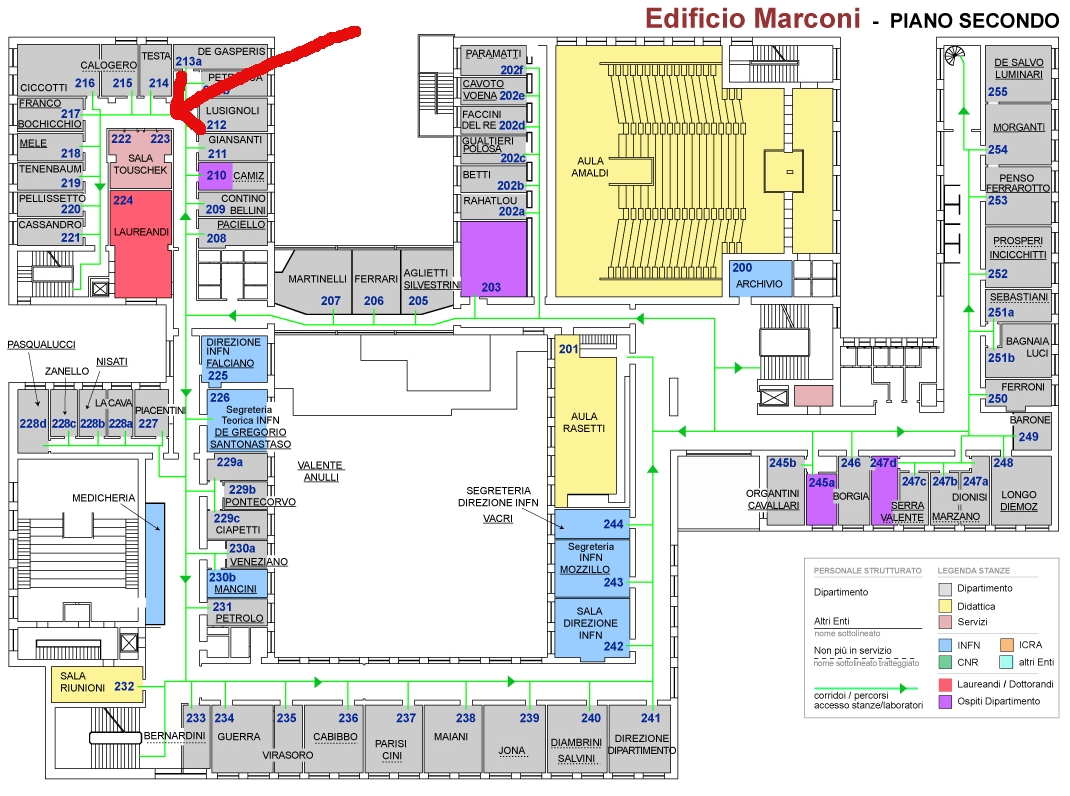Event
- Title:
- M.Müller:Directed assembly of block copolymers studied by simulations of soft, coarse-grained models
- When:
- 08.06.2012 10.30 h
- Where:
- Sala Touschek - Roma
- Category:
- Seminars
Description
Prof. Marcus Müller
Directed assembly of block copolymers studied by simulations of soft, coarse-grained models
Abstract:
Diblock copolymers self-assemble into a variety of periodic nano-structures in the bulk. The length scale is dictated by the molecular extension and ranges from 10 nm to 100 nm. Application of copolymer materials have attracted abiding interest for templating nano-structures in micro-electronics and catalysis. If the copolymer material is in contact with a patterned surface, the morphology of the diblock copolymer may either replicate the surface pattern without defects over large areas or a more complex reconstruction of the soft morphology at the patterned surface occurs depending on the mismatch between the symmetry and length scale of surface pattern and bulk morphology. Certain irregular patterns that do not have an analog in the bulk phase diagram, can be replicated by the adding "defectants" to the copolymer material. These are substances -- e.g., homopolymers or nanoparticles -- enrich at locations, where the substrate pattern deviates from the bulk morphology, and thereby reduce the excess free-energy of these local structures, permitting defect-free replication.
Using computer simulation of soft, coarse-grained polymer models, we investigate the directed assembly of copolymer materials on various surface patterns. I will discuss simulation techniques for studying the structure formation in block copolymer materials and illustrate the advantages and limitations of a top-down, coarse-grained description. The minimal coarse-grained models only incorporate the relevant interactions -- connectivity along the molecular backbone, limited compressibility of the polymer liquid, and repulsion between unlike segment species -- via simple potentials and thereby focus on the universal equilibrium properties of dense multi-component polymer systems. In such a model an effective segment corresponds to many monomeric repeat units of a chemically realistic representation and the interactions between effective segments are soft. This large degree of coarse-graining allows for a computationally efficient description of large three-dimensional systems characterized by a large invariant degree of polymerization. Special methods for computing free-energy differences of self-assembled morphologies and grain-boundaries will be discussed and applied to block copolymers in thin films. The computer simulation provides a wealth of information about the three-dimensional structure, its free energy, and also about the kinetics of structure formation.
http://www.theorie.physik.uni-goettingen.de/forschung/mm/index.en.html
Venue

- Venue:
- Sala Touschek - Website
- Street:
- Piazzale Aldo Moro, 2
- ZIP:
- 00185
- City:
- Roma
- State:
- Italy
- Country:
-

Description
EventList powered by schlu.net

